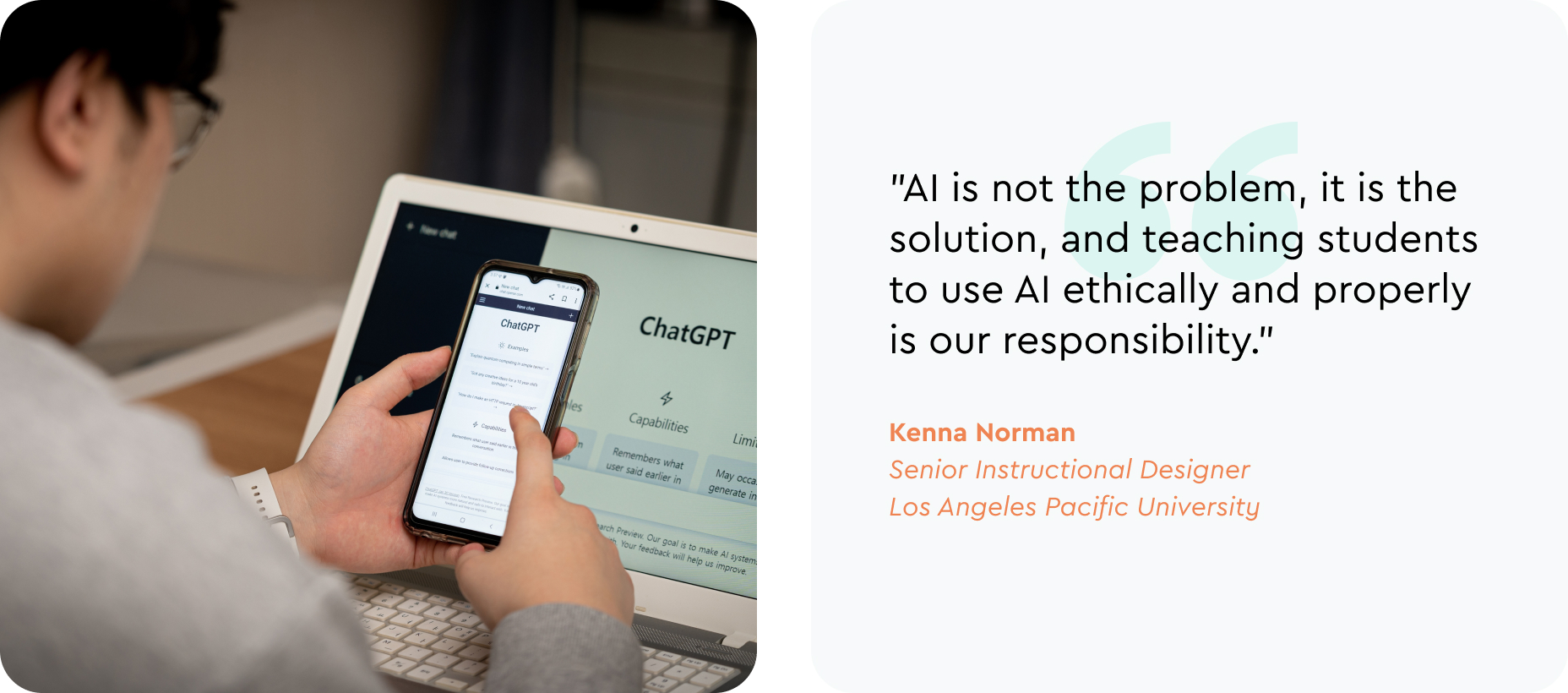The rapid rise of AI has left many educators wondering: how do we keep students learning authentically when powerful tools are just a few clicks away?
At ReAction Virtual, Kenna Norman, Senior Instructional Designer at Los Angeles Pacific University, offered a refreshing perspective. Instead of fearing AI or fighting it, she encouraged educators to rethink course design — weaving AI into the learning experience in a way that strengthens, rather than weakens, skill development.
Here’s a closer look at the strategies she shared for building courses that are ready for the future.
Students Are Already Using AI
Norman began by acknowledging what many instructors already know: students are using AI tools. The real challenge isn’t stopping them — it’s guiding them.

Rather than designing assignments that AI can easily complete, instructors can create activities that encourage critical thinking, reflection, and authentic engagement. By doing so, they not only protect learning outcomes but also help students develop skills they’ll need in today’s AI-driven workplace.
Make Assignments AI-Resilient, Not AI Proof
Creating AI-resilient assignments that consist of activities that incorporate AI intentionally while still requiring students to engage thoughtfully with the material is a strategy Norman suggested.
For example, instead of asking for a traditional essay, have students:
- Use an AI tool to generate a first draft
- Critique AI’s accuracy or bias
- Revise and expand on AI’s output using their own insights and skills
This approach shifts AI from being a shortcut to being a starting point for deeper learning.
Look Beyond the Written Word
To further encourage authentic work, move beyond simple text-based submissions. Assignments that require students to create something — a video, a podcast, an infographic, or a presentation — make it harder to rely solely on AI and push students to apply and demonstrate their knowledge in meaningful ways.
Adding elements like personal reflection, real-world applications, or group discussions can also help surface original thinking and encourage students to connect more deeply with course content.
For example, psychology students at Los Angeles Pacific University designed AI chatbots that acted like therapy clients. They then practiced therapy skills by interacting with these chatbots.
Model Ethical AI Use
Using AI for brainstorming, drafting, or refining ideas can sometimes spark feelings of guilt among instructors — as if relying on a tool somehow diminishes the quality of their work. But in reality, using AI thoughtfully is part of modern professional practice.

Being transparent about when and how AI is used helps set the right example for students. It encourages open conversations about responsible use, showing that AI can support creativity and critical thinking — not replace them. By modeling ethical practices, instructors can help students build the skills they’ll need to navigate an AI-driven world with confidence.
Focus on the Big Picture: Preparing Students for What’s Next
Ultimately, the real goal isn’t just to prevent shortcuts — it’s to help students think critically, work ethically, and build lasting skills that will serve them well beyond the classroom. The future will demand that students know how to use AI thoughtfully, evaluate its outputs, and still bring their own voices to their work. As educators, we have the opportunity (and responsibility) to start building those habits today.










